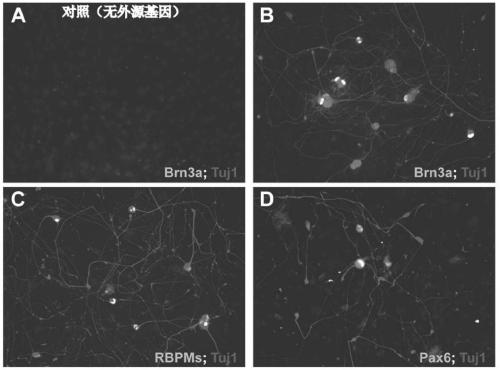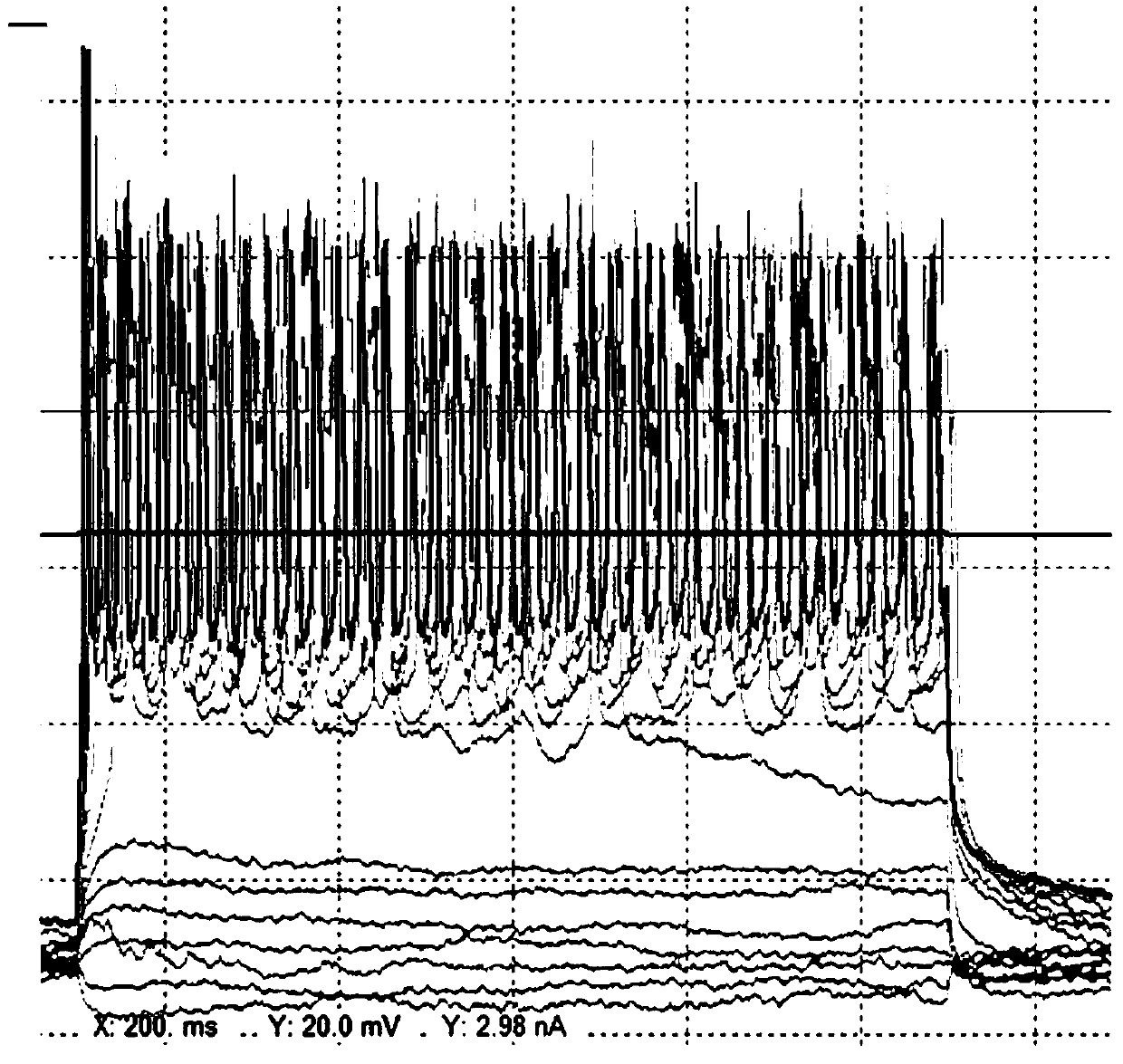Method for preparing retinal ganglion cells
A technology of ganglion cells and retina, applied in the field of biomedicine, can solve the problem of insufficient efficiency of retinal ganglion cell-like neurons and achieve high efficiency
- Summary
- Abstract
- Description
- Claims
- Application Information
AI Technical Summary
Problems solved by technology
Method used
Image
Examples
Embodiment 1
[0041] This embodiment provides a method for preparing retinal ganglion cells, the specific steps comprising:
[0042] Step 1. Preparation of lentiviral expression plasmid pSicoR-TetO-Ascl1-P2A-Islet1-T2A-Brn3b (pSicoR-TetO-ABI)
[0043] (1) Obtain the full-length cDNA of Ascl1 gene, Brn3b gene and Islet1 gene
[0044] 1) Total RNA was extracted from head tissues of mouse embryos on day 13.5, and reverse-transcribed into a cDNA library using reverse transcriptase Superscript III (ThermoFisher, Scientific).
[0045] 2) Using the cDNA library as a template and using the following SEQ ID No.1 and SEQ ID No.2 as primers, perform PCR amplification to obtain the full-length cDNA of the mouse Brn3b gene;
[0046] SEQ ID No.1: 5'-gaactgtacaatgatgatgatgtccctgaac-3',
[0047] SEQ ID No.2: 5'-ggttgaattcctaaatgccggcagagtatttc-3';
[0048] The PCR amplification system is: 1μl cDNA library, 1×Phusion reaction buffer, 200μM dNTP, 1μM forward primer SEQ ID No.1, 1μM reverse primer SEQ ID No....
Embodiment 2
[0088] This example is a modification of Example 1, and provides a method for preparing retinal ganglion cells. Compared with Example 1, the changes are that the exogenous Ascl1 gene, the exogenous Islet1 gene, and the exogenous Brn3b The genes are located on different plasmids. Preparation methods include:
[0089] Step 1. Obtain lentiviral expression plasmids carrying exogenous Ascl1 gene, Islet1 gene and Brn3b gene respectively
[0090] (1) The lentiviral expression plasmid carrying exogenous Ascl1 gene directly used TetO-FUW-Ascl1, which was purchased from Addgeng, Cat. No. 27150.
[0091] (2) Construction of lentiviral expression plasmid pSicoR-TetO-Islet1
[0092] 1) Refer to Example 1 to obtain the full-length cDNA of Islet1 gene (Islet1-cDNA), wherein the amplification primers are replaced with:
[0093] SEQ ID No.10: 5'-ggttgctagccaccatgggagacatgggcgatcc-3',
[0094] SEQ ID No. 11: 5'-ggtatgtacatcatgcctcaataggactgg-3'.
[0095] 2) Cloning Islet1-cDNA into the ind...
PUM
 Login to View More
Login to View More Abstract
Description
Claims
Application Information
 Login to View More
Login to View More - R&D
- Intellectual Property
- Life Sciences
- Materials
- Tech Scout
- Unparalleled Data Quality
- Higher Quality Content
- 60% Fewer Hallucinations
Browse by: Latest US Patents, China's latest patents, Technical Efficacy Thesaurus, Application Domain, Technology Topic, Popular Technical Reports.
© 2025 PatSnap. All rights reserved.Legal|Privacy policy|Modern Slavery Act Transparency Statement|Sitemap|About US| Contact US: help@patsnap.com


